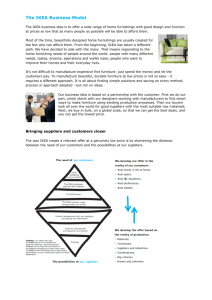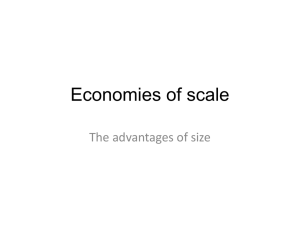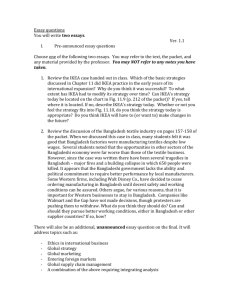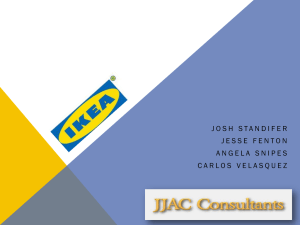BSc (Hons) Management MARKETING Cohort: BMAN/11/FT Aug
advertisement
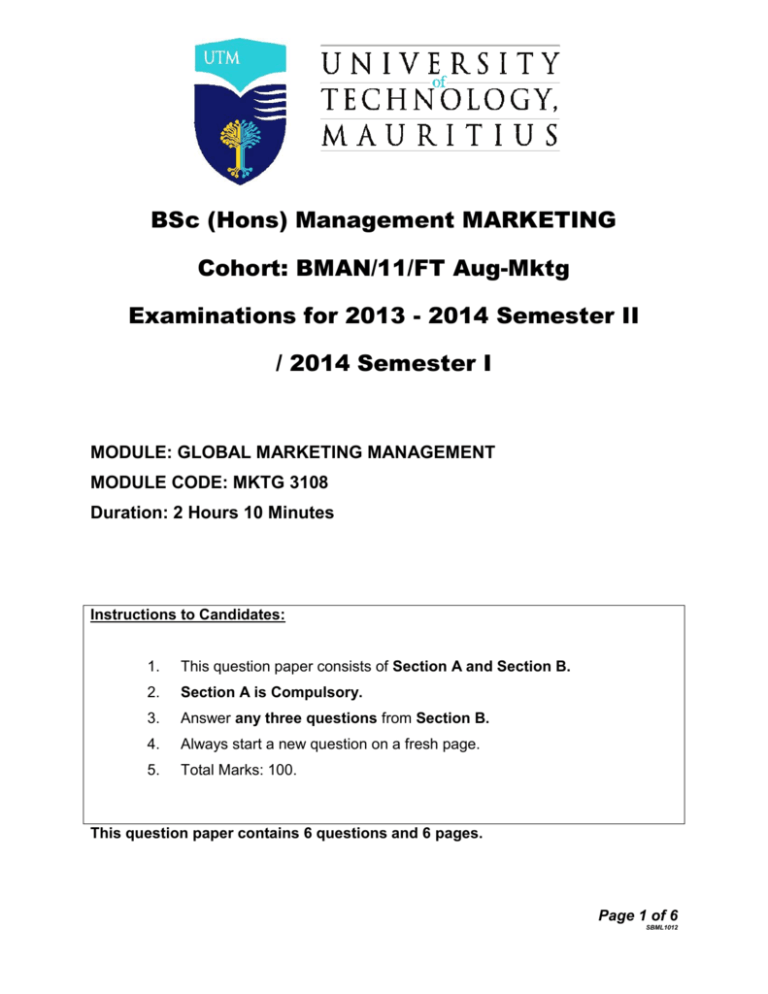
BSc (Hons) Management MARKETING Cohort: BMAN/11/FT Aug-Mktg Examinations for 2013 - 2014 Semester II / 2014 Semester I MODULE: GLOBAL MARKETING MANAGEMENT MODULE CODE: MKTG 3108 Duration: 2 Hours 10 Minutes Instructions to Candidates: 1. This question paper consists of Section A and Section B. 2. Section A is Compulsory. 3. Answer any three questions from Section B. 4. Always start a new question on a fresh page. 5. Total Marks: 100. This question paper contains 6 questions and 6 pages. Page 1 of 6 SBML1012 SECTION A: COMPULSORY QUESTION 1: (40 MARKS) IKEA’S COMPETITIVE EDGE IKEA the Swedish furniture company is known as a cost focus strategy. They are going to capture their niche in every city they go into. But this can be risky as the market is finite because it is so narrow. The issue of sustainability is central to this strategy. Cost leadership is a sustainable source of competitive advantage only if barriers exist that prevent competitors from benefiting from low cost. Sustained differentiation depends on continued perceived value and the absence of imitation by competitors. Several factors determine whether focus can be sustained as a source of competitive advantage. First a cost focus is sustainable if a firm‟s competitors are defining their targets more broadly. A focuser does not need to be all things to all people: Competitors may diminish their advantage by trying to satisfy the needs of a broader market segment. Second, a firm‟s differentiation focus advantage is sustainable only if competitors cannot define the segment even more narrowly. Also, focus can be sustained if competitors cannot overcome barriers that prevent imitation of the focus strategy, and if customers in the target segment do not migrate to other segments that the focuser does not serve. IKEA‟s approach to the furniture business has enabled it to grow while the industry has been stagnating. Sourcing furniture from 2,330 suppliers in 64 countries helps the company maintain its low cost position. Page 2 of 6 SBML1012 IKEA‟s international growth has been quite successful especially because it did not go public and thus had no need to show constant profits and could take more investment risks. IKEA opened several stores in Central and Eastern Europe and later moved to Russia where it planned to open 10 outlets. At that time, consumers in those regions had low purchasing power, the stores offered a smaller selection of goods; some furniture were designed specifically for the cramped living style The founder of IKEA, Ingvar Kamprad, firmly believes in long term investment and states: „ it will take twenty five years to furnish Russia. Throughout Europe, IKEA benefits from the perception that Sweden is the source of high quality products. The United Kingdom represents the fastest growing market in Europe. IKEA‟s London store has achieved annual sales growth of 20 percent. Germany currently accounts for more than one quarter of IKEA‟s total revenues. IKEA has also opened two stores in China but is having difficulty securing local suppliers and positioning for one store that is located in a shopping mall. Industry observers predicted the United States will eventually be IKEA‟s largest market. The first store was opened in Philadelphia. It has 14 stores in major metropolitan areas, notes Jeff Young, the chief operating officer of Lexinton Furniture industries. „IKEA is on the way to become Wall Mart store of the home furnishing industry. If you are in this business, you‟d better take a look.‟ Some American customers, however, are irked to find popular items are out of stock. Another problem is the long lines resulting from the company‟s no-frills approach. Complained one shopper, „great idea, poor execution. The quality of much of what they sell is good, but the hassles make you question whether it‟s worth it. Goran Carstedt, President of IKEA North America, responds to such criticisms by referring to the company‟s mission. „If we offered more services, our prices would go up, he explains. „Our customers understand our philosophy, which calls for each of us to do a little in order to save a lot. They value our low prices. And almost all of them say they will come back again.‟ To keep them coming back, IKEA is spending between $25 million and $35 million on advertising to get its message across. Although it is a common industry practice to rely heavily on newspaper and radio advertising two thirds of IKEA‟s North American advertising budget is allocated for TV. Page 3 of 6 SBML1012 John Sitnik, an executive at IKEA‟s US. Inc.,says , „ we distanced ourselves from the other furniture stores. We decided TV is something we can own.‟ Source: Tim Burt, „IKEA Chief breaks silence to tell home truths,‟ Financial Times. Required: (a) (i) Which generic strategy as proposed by Michael Porter, has IKEA implemented when going international? (3 marks) (ii) Support your answer with elements from the case. (12 marks) (b) Discuss on the benefits of following a cost leadership strategy for: - the organization; (8 marks) - its customers. (7 marks) (c) Which positioning strategy did IKEA adopt? Justify your answer. (10 marks) Page 4 of 6 SBML1012 SECTION B: ANSWER ANY THREE QUESTIONS QUESTION 2: (20 MARKS) Global marketers must deal with a number of environmental factors when making pricing decisions. Elaborate on three of these factors. QUESTION 3: (20 MARKS) There is an ongoing debate between “standardization” and “adaptation” pertaining to global advertising. Critically evaluate the different sides of the arguments in the global context. QUESTION 4: (20 MARKS) Successful global firms should have a proper leadership style, an effective organisation and proper control. Discuss on the above three features mentioned above. Page 5 of 6 SBML1012 QUESTION 5: (20 MARKS) (a) Distinguish between high context and low context culture, with the help of appropriate examples. (12 marks) (b) The various stages of international marketing involvement is strongly linked to the Ethnocentric/Polycentric/ Regiocentric/Geocentric (EPRG) schema. Explain each component of the EPRG schema and how they are linked to the different stages of international marketing involvement. (18 marks) QUESTION 6: (30 MARKS) Describe how a global firm operating in the fast food sector, may segment, target and position its products / services. ***END OF QUESTION PAPER*** Page 6 of 6 SBML1012
